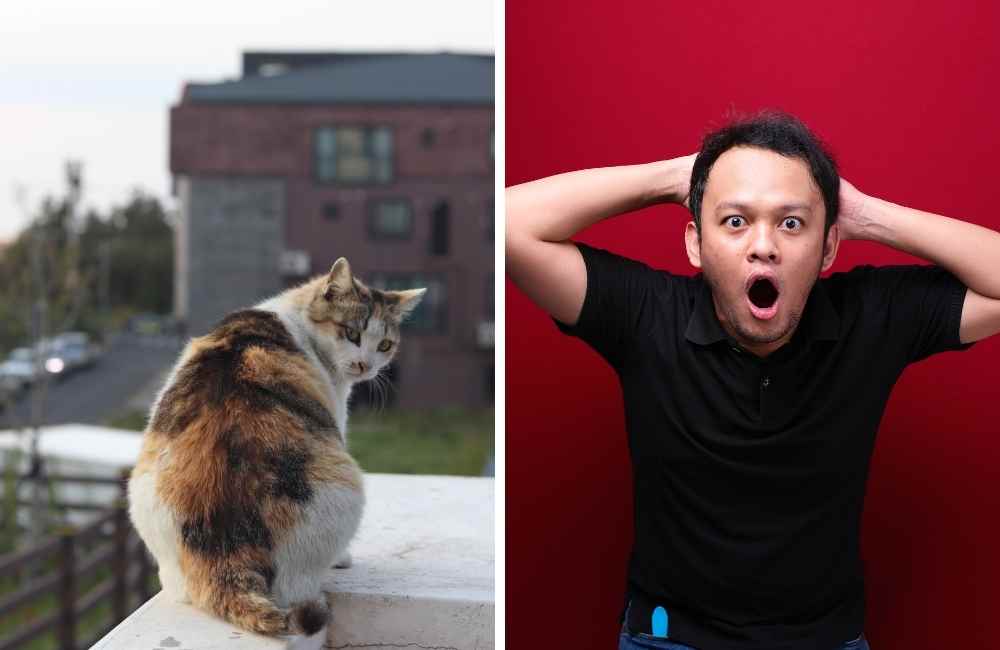Have you ever wondered, “Why Does My Cat Keep Getting Poop Stuck to Bum?” It’s a question that might perplex many cat owners, and rightfully so.
Our feline companions, with their charming antics and independent spirits, bring immense joy to our lives.
However, when faced with the peculiar issue of poop clinging to their hindquarters, it raises concerns and prompts us to delve deeper into the mysteries of feline hygiene.
Understanding the reasons behind this phenomenon is not just about maintaining a clean environment but is essential for your cat’s overall well-being.
Cats, known for their fastidious grooming habits, usually manage their hygiene impeccably.
Yet, when confronted with situations where poop adheres to their fur, it necessitates a closer inspection of potential causes and effective solutions.

In this comprehensive guide, we will unravel the various factors contributing to this issue and provide practical insights on how to address and prevent it.
From the impact of diet and fur type to the significance of litter box choices, we’ll explore every facet of feline hygiene, empowering you to ensure your cat enjoys a clean, comfortable, and healthy existence.
So, let’s embark on this journey to understand why your cat encounters poop sticking issues and discover proactive measures to enhance their hygiene and your shared companionship.
Why Does My Cat Keep Getting Poop Stuck to Bum?
Cats are delightful companions, but when faced with the perplexing issue of poop sticking to their bum, it can be both frustrating and concerning for pet owners.
In this comprehensive guide, we will explore the various reasons behind this phenomenon and provide practical solutions for maintaining your feline friend’s hygiene.
Importance of Cat Hygiene
Feline hygiene is crucial not only for the cat’s well-being but also for the harmony in your household. Cats are known for their meticulous grooming habits, but when issues arise, it’s essential to address them promptly.
Common Causes of Poop Sticking to Cat’s Bum
1. Inadequate Diet
A cat’s diet plays a pivotal role in their digestive health. Certain foods can lead to sticky poop, making it more likely to cling to their fur.
2. Fur Length and Type
Long-haired breeds are more susceptible to poop sticking issues. Understanding your cat’s fur type is crucial in devising an effective grooming routine.
3. Digestive Issues
Underlying digestive problems can cause abnormal bowel movements, leading to poop sticking to the cat’s bum.
4. Litter Box Problems
Issues with the litter box, such as its size or cleanliness, can contribute to hygiene problems for your cat.
Related Posts :
Let’s Understand How To Keep Cats Away From Peace Lily? 10 Facts
Let’s Understand Top 15: Cat Sleeping Above My Head Meaning Spiritual
Let’s Understand Do Cats Get Horny? TOP 10 FACTS
Let’s understand Is Pura Safe for Cats?
Recognizing the Signs
1. Behavioral Changes
Observing changes in your cat’s behavior can be an early indicator of discomfort caused by poop sticking issues.
2. Frequent Grooming
If your cat is excessively grooming their hindquarters, it may be a sign of irritation or discomfort.
3. Discomfort and Irritation
Watch for signs of discomfort or irritation when your cat uses the litter box or attempts to clean themselves.
Grooming Techniques for Cat Owners
1. Regular Brushing
For long-haired cats, regular brushing helps prevent matting and reduces the likelihood of poop sticking to their fur.
2. Specialized Wipes
Using cat-safe wipes can assist in keeping your cat’s bum clean without causing any discomfort.
3. Proper Diet for Healthy Bowel Movements
Ensure your cat’s diet is well-balanced and suitable for their age and health status to promote healthy bowel movements.
Choosing the Right Cat Litter
1. Texture and Composition
Opt for cat litter with a texture that minimizes sticking and is comfortable for your cat to use.
2. Odor Control
A clean and odor-free litter box encourages your cat to use it regularly, reducing the likelihood of hygiene issues.
3. Size and Placement of the Litter Box
Choosing the right size and strategic placement of the litter box can make a significant difference in your cat’s bathroom habits.
Veterinary Assistance and Check-ups
1. Professional Grooming
If grooming at home proves challenging, seek professional grooming services to ensure your cat’s hygiene needs are met.
2. Medical Examination
If the issue persists, consult your veterinarian for a thorough examination to rule out any underlying health concerns.
DIY Solutions and Preventive Measures
1. Trimming the Fur Around the Bum
Carefully trimming the fur around the bum area can minimize the chances of poop sticking.
2. Hydration and Moisture Control
Ensure your cat stays hydrated to maintain soft, easily passable stools that are less likely to stick.
3. Creating a Comfortable Bathroom Environment
Make the litter box area inviting and stress-free to encourage regular use.
Addressing Specific Breeds and Their Needs
1. Long-haired Cats
Long-haired breeds require more extensive grooming to prevent matting and hygiene issues.
2. Breeds Prone to Digestive Issues
Certain breeds may be predisposed to digestive problems; tailor their diet accordingly.
Importance of Regular Vet Visits
Regular veterinary check-ups are essential for maintaining your cat’s overall health and addressing any potential issues before they escalate.
Real-life Cat Owner Stories
Hear from fellow cat owners who have successfully tackled poop sticking issues and share their insights on maintaining feline hygiene.
The Emotional Bond Between Cats and Their Owners
Navigating hygiene challenges can strengthen the emotional bond between cats and their owners. Learn how overcoming obstacles can deepen your connection.
Tips for Creating a Stress-Free Environment
Implement strategies to create a calm and stress-free environment for your cat, promoting overall well-being.
Common Mistakes to Avoid
Learn from common mistakes cat owners make when dealing with hygiene issues and how to avoid them.
Related Posts :
Let’s Understand How To Keep Cats Away From Peace Lily? 10 Facts
Let’s Understand Top 15: Cat Sleeping Above My Head Meaning Spiritual
Let’s Understand Do Cats Get Horny? TOP 10 FACTS
Let’s understand Is Pura Safe for Cats?
Conclusion
In conclusion, understanding the reasons behind why your cat keeps getting poop stuck to their bum is crucial for effective prevention and resolution. By adopting a proactive approach to grooming, diet, and litter box management, you can ensure your feline friend enjoys a clean and comfortable existence.
5 Unique FAQs After The Conclusion:
- Q: Can a specific diet help prevent poop sticking issues in my cat?
- A: Yes, a well-balanced diet tailored to your cat’s needs can contribute to healthy bowel movements.
- Q: Is professional grooming necessary, or can I manage it at home?
- A: While home grooming is possible, professional grooming may be necessary for some cats, especially long-haired breeds.
- Q: How often should I visit the vet for my cat’s hygiene concerns?
- A: Regular veterinary check-ups are recommended, and immediate visits are crucial if issues persist.
- Q: Are there any specific litter box tips for preventing hygiene issues?
- A: Choosing the right size, texture, and maintaining cleanliness are key aspects to prevent hygiene problems.
- Q: What should I do if my cat displays discomfort during grooming or litter box usage?
- A: Consult your veterinarian promptly to rule out any underlying health issues causing discomfort.

